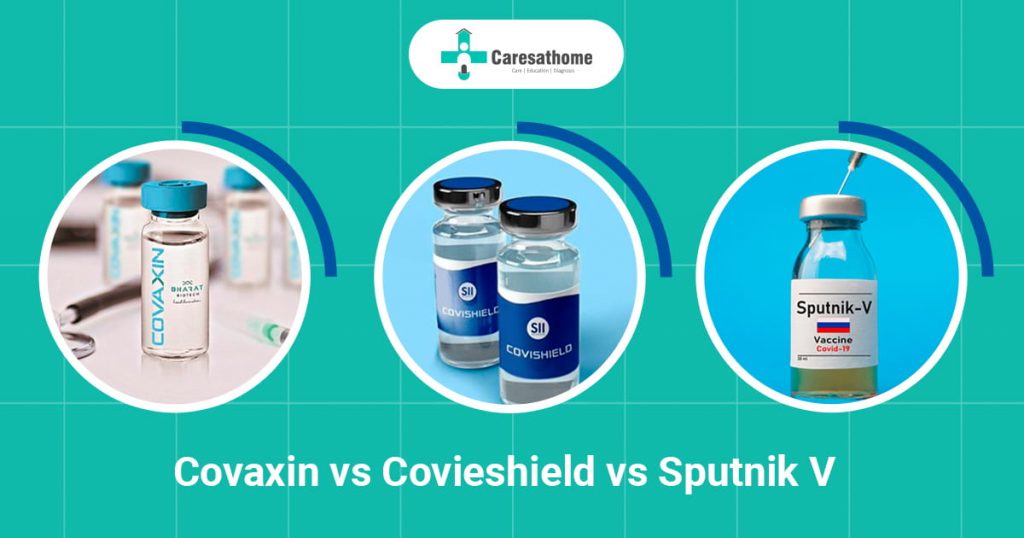Covaxin vs Covishield vs Sputnik V: A Comparison of COVID-19 Vaccines
As the world continues to battle the COVID-19 pandemic, vaccines have emerged as one of the most effective tools in controlling the spread of the virus and preventing severe illness. In India, three major vaccines have been authorized for emergency use: Covaxin, Covishield, and Sputnik V. These vaccines have played a crucial role in India’s vaccination drive. While all three vaccines are designed to protect against COVID-19, they differ in terms of technology, efficacy, and the way they are administered.
Here’s a comparison of the three vaccines:
1. Covaxin (Bharat Biotech)
- Type of Vaccine: Inactivated (Killed Virus)
- Manufacturer: Bharat Biotech, India
- Vaccine Technology: Covaxin is an inactivated virus vaccine. It uses the killed version of the SARS-CoV-2 virus to stimulate the immune system and train it to recognize and fight the virus.
- Dosing Schedule: Two doses, administered 4 weeks apart.
- Efficacy: According to clinical trials, Covaxin has shown an efficacy of around 77.8% in preventing symptomatic COVID-19 infection.
- Approval Status: Approved for emergency use by the Indian government and the World Health Organization (WHO).
- Side Effects: Common side effects include pain at the injection site, fever, fatigue, and headache. Serious side effects are rare.
- Special Features: Covaxin has been lauded for its strong immune response and its use of a traditional vaccine technology that has been used for other vaccines as well.
2. Covishield (AstraZeneca-Oxford Vaccine)
- Type of Vaccine: Viral Vector (Adenovirus)
- Manufacturer: Serum Institute of India (SII), in collaboration with AstraZeneca and Oxford University
- Vaccine Technology: Covishield uses a viral vector approach, where a modified version of a chimpanzee adenovirus is used to deliver the genetic material of the spike protein of the SARS-CoV-2 virus to stimulate an immune response.
- Dosing Schedule: Two doses, administered 4 to 12 weeks apart (typically, a gap of 8-12 weeks is recommended for optimal results).
- Efficacy: Covishield has an efficacy of about 70% in preventing symptomatic COVID-19, but this can increase to around 80% with an extended gap between doses.
- Approval Status: Covishield has been approved for emergency use in India and several other countries and is also authorized by the World Health Organization (WHO).
- Side Effects: The side effects are generally mild and include pain at the injection site, fever, chills, and fatigue. There have been reports of rare blood clotting events, but these are extremely rare.
- Special Features: Covishield is one of the most widely used vaccines globally due to its affordability, easier storage conditions, and proven efficacy.
3. Sputnik V (Gamaleya Research Institute)
- Type of Vaccine: Viral Vector (Adenovirus)
- Manufacturer: Dr. Reddy’s Laboratories, India (in partnership with the Russian Direct Investment Fund and the Gamaleya Institute)
- Vaccine Technology: Sputnik V uses two different adenoviruses (Ad26 and Ad5) in its two doses to create a two-shot vaccination regimen. This dual vector approach is designed to enhance the immune response.
- Dosing Schedule: Two doses, administered 3 weeks apart.
- Efficacy: Sputnik V has shown an efficacy of about 91.6% in clinical trials, which is one of the highest efficacy rates reported for COVID-19 vaccines.
- Approval Status: Sputnik V has been authorized for emergency use in India, Russia, and several other countries, though it is still undergoing evaluations in some regions.
- Side Effects: Side effects are similar to other vaccines and include fever, fatigue, pain at the injection site, and headache. Serious side effects are rare.
- Special Features: Sputnik V’s use of two different adenoviruses for the two doses is aimed at reducing the chance of the immune system becoming “immune” to the vector after the first dose, thereby increasing the overall effectiveness.
Comparison Summary:
| Feature | Covaxin | Covishield | Sputnik V |
|---|---|---|---|
| Type of Vaccine | Inactivated (Killed Virus) | Viral Vector (Adenovirus) | Viral Vector (Adenovirus) |
| Technology | Killed virus technology | Chimpanzee adenovirus vector | Dual adenovirus vectors |
| Manufacturer | Bharat Biotech, India | Serum Institute of India (SII) | Dr. Reddy’s Laboratories, India |
| Dosing Schedule | 2 doses, 4 weeks apart | 2 doses, 4 to 12 weeks apart | 2 doses, 3 weeks apart |
| Efficacy | ~77.8% | ~70% (increased with extended gap) | ~91.6% |
| Side Effects | Mild (fever, fatigue, pain) | Mild (fever, chills, fatigue) | Mild (fever, pain, fatigue, headache) |
| Approval Status | Approved by WHO, India | Approved by WHO, India, and globally | Approved by India and other countries |
| Storage | 2-8°C (regular refrigeration) | 2-8°C (regular refrigeration) | -18°C (frozen storage for the first dose) |
Which Vaccine is Best?
The best vaccine for an individual depends on availability, eligibility, and personal health conditions. All three vaccines—Covaxin, Covishield, and Sputnik V—are highly effective in preventing severe illness, hospitalization, and death due to COVID-19.
- Covaxin: Best suited for those looking for a traditional inactivated virus vaccine.
- Covishield: Ideal for large-scale vaccination campaigns due to its easier storage requirements and proven global success.
- Sputnik V: Offers a high efficacy rate and is useful for individuals who prefer a dual adenovirus vector approach.
Ultimately, any of these vaccines can significantly reduce the risk of COVID-19, and getting vaccinated is the most important step in protecting yourself and others. It’s crucial to get vaccinated as soon as you’re eligible, regardless of which vaccine is available to you.

